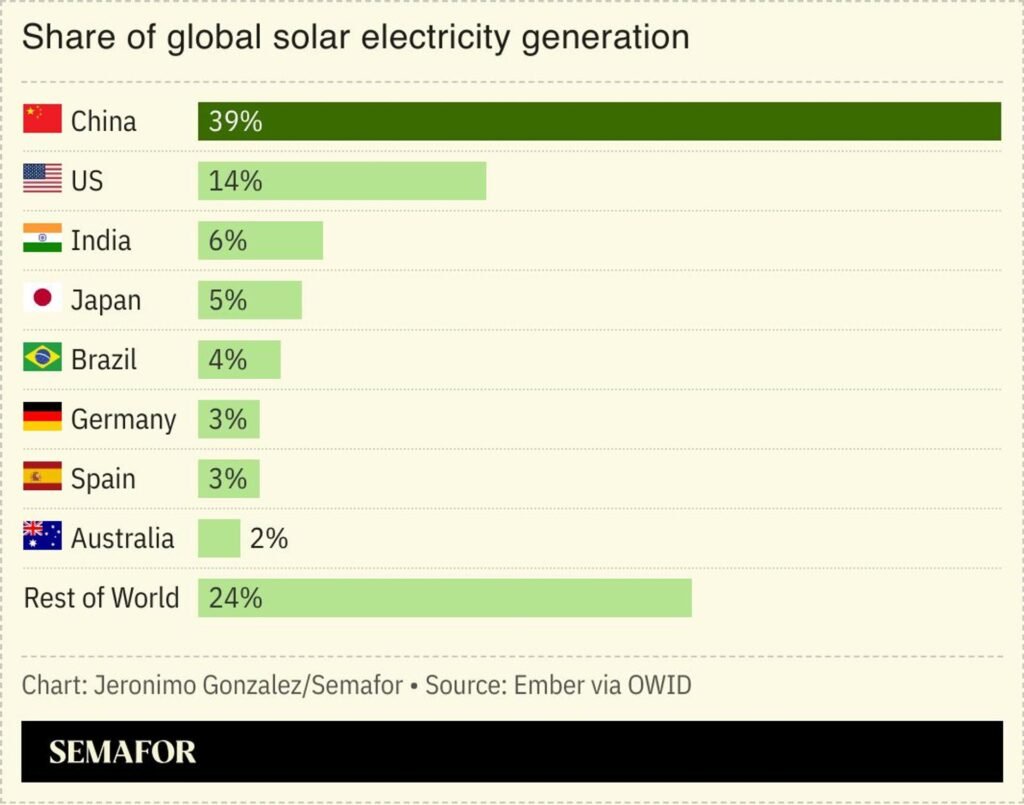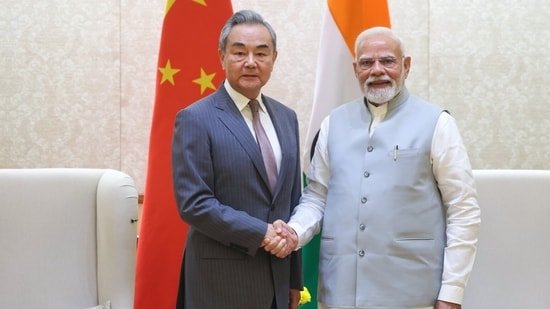China’s electricity supplies are generally stable today, but extreme weather and renewables integration are growing challenges
.jpg)
The main control room of a renewable energy plant in Holingol city, Inner Mongolia. The intermittent nature of China’s growing renewable energy base is pushing the country to reform its power systems (Image: CFOTO / Sipa US / Alamy)
A generation ago in China, power outages were a part of daily life for many as the power grid struggled to catch up with the country’s economic development. In rapidly developing cities and rural areas, the lights could go out suddenly, and sometimes stay out for hours.
A power-hungry nation
China’s electricity system has become much more reliable. In 2024, the average consumer lost electricity access for just under 7 hours per year, less than half the 16.5 hours of 1998, according to the Power Reliability Management Centre (PRMC).
Since 1978, the country’s growing economy has been demanding more and more power. But back then, only central government was allowed to invest in power generation. A shortage of government funds limited the power supply and caused regular outages, hampering economic growth.
In response, the government relaxed rules on investment in the sector in 1985. Local governments, private companies and overseas enterprises could now invest in electricity generation. Government contracts guaranteed the purchase of a number of hours of generation per year at a fixed price, ensuring a return on those investments. The changes worked, with more investment, and more electricity produced. During the 1980s and 1990s, generation capacity grew by an average of 10% per year.
According to the PRMC’s analysis, electricity shortages were the main reliability issue up until 1997, and over 60% of power outages were caused by insufficient generation. From then, growth in demand slowed while generation capacity continued to increase, by over 10 gigawatts a year. Shortages had become much less of a problem. In 2001, power shortages only accounted for 1% of grid reliability issues.
At the turn of the century, it looked as if China no longer had to worry about a lack of electricity.
Electricity ‘droughts’ remain
China’s installed generating capacity has shot up in the past decade, from 1,370 gigawatts in 2014 to 3,350 gigawatts in 2024. Still, supply-and-demand imbalances have not been completely ironed out.
Disconnects between where and when power is generated and needed are increasingly apparent, and shortages still occur locally or at times of peak demand. These are structural issues, rather than overall supply issues.
The causes of shortages differ by year and location, but all reflect a structural problem not yet solved: generally, China has too much coal power capacity, but it still does not have enough to meet peaks in demand. In other words, there is plenty of power capacity across a year but not always across shorter timescales.
In the past, increasing coal-fired power capacity was generally considered the first choice to meet China’s energy needs. But according to a Greenpeace report, spending hundreds of millions of yuan on coal power plants to meet peak loads is terrible value for money. It would be better to reform the electricity supply system.
Camille Paillard, an energy analyst with the International Energy Agency (IEA), tells Dialogue Earth: “Historically, grid stability has been supported by extensive investment in modern and digital technologies for the transmission network, as well as high reserve margins and abundant hydropower. However, as in many countries, the pace of grid investment in China is not keeping up with the rapid growth of renewables and electrification.”
Electrification means switching from using fossil-fuelled powered machines to those powered by electricity. Examples include making steel using electric arc furnaces rather than coal-fired blast furnaces, driving electric vehicles instead of internal combustion vehicles, or replacing gas boilers with heat pumps in homes.
Yang Muyi, senior electricity policy analyst at the energy think-tank Ember, hypothesises that electrification levels in China are approaching those of developed nations, and that means more load on the grid. “Solutions include increasing investment in the distribution network, encouraging off-peak charging, and ‘demand-response management’,” he says.
Demand-response management entails encouraging consumers to shift electricity use to times when it is more plentiful or general demand is lower, through flexible pricing and financial incentives.
Yang stresses the importance of integrating demand into overall system planning. For example, electric cars could help regulate the grid using a Vehicle-to-Grid model. This would turn them into mobile batteries – charging up when demand on the grid is low, feeding power back in when it is high. That needs smart dispatch systems and market incentives, Yang adds.
Electricity planning is changing in China, from the traditional separation of generation and the grid, towards integrated solutions for generation, grid, demand and storage.
Complexities of bringing renewables to the grid
Ten days prior to a severe power outage in Spain and Portugal in April 2025, Spain had run entirely on renewables for a full day for the first time. The intermittency of renewable energy was quickly blamed for the power cut. The official report rebuts that oversimplification but some media outlets continue to make the accusation.

Battery powered radios and torches for sale during a blackout in Barcelona, Spain. Renewable energy was quickly blamed for this widespread April 2025 power cut, but the official findings revealed a more complex set of issues were at play (Image: Emilio Morenatti / Associated Press / Alamy)
This is not the first time renewables have been blamed like this. Dialogue Earth spoke to Anders Hove, a senior research fellow at the Oxford Institute for Energy Studies’ China Energy Research Programme: “In my experience, any major power disruption (whether that’s a sudden outage or a shortage) is caused by a complex set of factors. But often people look for a single simple reason, and that habit is exploited by those with vested interests, particularly when it comes to renewable energy.”
Part of the reason the misunderstanding is so persistent is that renewables are indeed affected by the time of day, the season and the weather. Electricity systems need to be able to respond accordingly. “But those fluctuations don’t mean that the grid can’t be stable,” Hove clarifies.
Investment in renewable energy has jumped in the five years since China set its targets to peak carbon emissions before 2030 and reach carbon neutrality by 2060. In 2024, combined wind and solar energy capacity in China overtook that of coal, while national targets for wind and solar output were hit six years ahead of schedule.
Connecting renewables to the grid has only a limited impact on electricity systems in the early stages, according to an International Energy Agency report. But as rollout continues up to 2030, China will get into the “deep water” of renewables intermittency and grid stability. If the necessary measures are not taken, reliability will be at risk.
Paillard of the IEA says: “We have found that low-carbon resources like hydropower, battery storage, and demand response could meet nearly 60% of China’s short-term flexibility needs by 2030.” She explains that these needs are set to triple by 2030 compared to 2022. “Ensuring reliability will require deploying new, flexible resources while also making better use of existing ones. Coal will continue to play a role in providing both short-term and seasonal flexibility, but it needs to be part of a much broader portfolio of solutions.”
These low-carbon resources are already technically mature and have been widely deployed, “but remain locked out of markets by rules designed for a fossil-fuel-dominated system,” Paillard says.
Hove says that, in the past, market mechanisms did not allow the price of electricity to rise in line with the price of coal, making life difficult for coal power plants. A capacity-payment system was introduced to compensate, ensuring reliability. But that system is primarily for coal power plants. Other flexible sources of power, such as gas or energy-storage facilities, do not receive the same support.
Meanwhile, a lot of long-term energy storage methods, such as green hydrogen and green ammonia (hydrogen and ammonia produced using renewable energy only), are still in the demonstration stage, according to Yang Muyi. “More time, research and policy support are needed before commercialisation,” he says.
Why China needs to be alert to extreme weather
China has never had a widespread power outage like Spain and Portugal did in April, but that does not mean its electricity system is entirely secure. The country has seen regional problems and localised power cuts in recent years.
According to an National Energy Administration report, the biggest risk facing China’s grid is the climate. In 2024, over 40% of all problems and power cuts were linked to the weather and natural disasters. For example, between 11 and 13 April 2025, high winds and heavy rain brought power cuts to 1.35 million electricity users across 22 provinces.
Extreme weather does not just test the design, management and resilience of the grid. It can also affect renewable energy generation. According to a 2024 paper published in the journal Nature Water, extreme drought, low wind speeds and weak sunlight could cause China’s utilisation hours of hydro, solar and wind power generation to drop by 12% by 2060.
It is a vicious cycle: coal power causes climate change and extreme weather; extreme weather reduces generation from low-carbon, renewable alternatives.
“With rising electrification and more frequent extreme weather events,” says Paillard, “building a robust and digitalised grid both at the transmission and distribution levels, alongside flexible generation and demand response, will be essential to maintaining system security in China.”
Author: Niu Yuhan
This article was originally published on Dialogue Earth under the Creative Commons BY NC ND licence. Read the original article.

.jpg)






